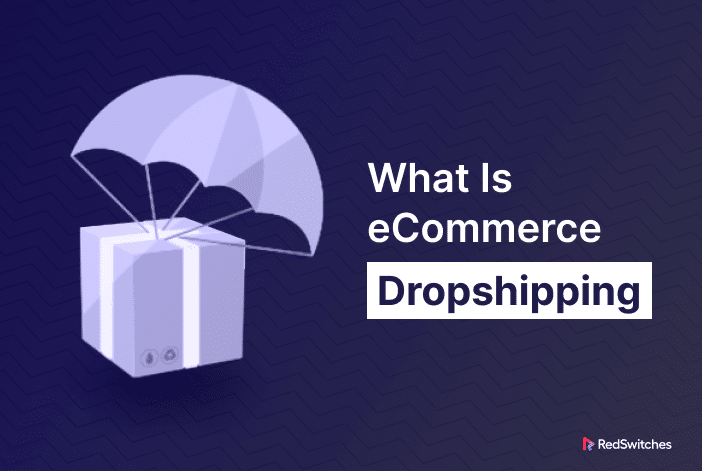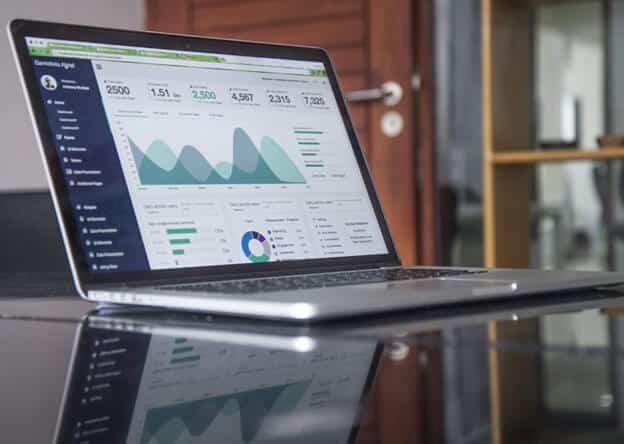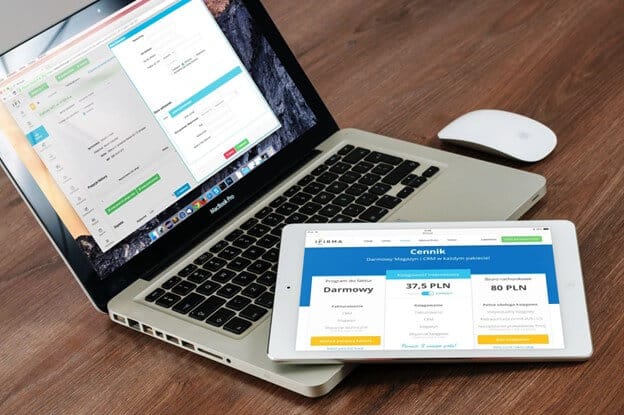As we stand on the cusp of a digital revolution, how we shop and conduct business is transforming. With projections indicating that by 2026, a staggering 24% of retail purchases will be made online, it becomes imperative for businesses and consumers alike to understand the driving forces behind this shift.
One such mechanism powering this digital commerce wave is “eCommerce dropshipping”. A concept that, while simple, has profound implications for retailers, entrepreneurs, and shoppers around the globe.
Dive in as we unpack the intricacies of ecommerce dropshipping business and explore its transformative potential in the retail landscape.
Table of Contents
- What is dropshipping?
- What is a Dropshipper?
- How Does Dropshipping Work?
- Key Players in the Dropshipping Model
- Benefits of Dropshipping
- Drawbacks of Dropshipping
- How to Set Up a Dropshipping Store?
- Best Dropshipping Platforms in 2024
- Conclusion
- FAQs
What is dropshipping?
Dropshipping is a retail fulfillment method where a store doesn’t keep the products it sells in stock. Instead, when a store sells a product using the dropshipping model, it purchases the item from a third party and has it shipped directly to the customer.
Credit: Unsplash
Key Features of Dropshipping:
No Inventory Required:
Retailers are freed from the demands of inventory management, negating the need for storage space and reducing overhead costs like insurance and unsold stock.
Direct to Customer:
The order process is streamlined. Once an order is placed, the retailer informs the supplier, who takes over the shipping and delivery to the customer.
Wide Product Selection:
Retailers can diversify their product offerings without any upfront investment. They can list many products on their website by collaborating with different suppliers.
What is a Dropshipping Business Model?
The dropshipping business model is a strategic approach to e-commerce that prioritizes efficiency and scalability. Instead of the traditional retail method where stores purchase products in bulk, manage inventory, and then handle the packaging and shipping themselves, dropshipping introduces a novel solution. Let’s break down its foundational elements:
1. Retailer’s Role:
- In dropshipping, the retailer primarily acts as a storefront or a marketplace. They create a platform (usually an online store) where customers can browse and purchase products.
- Unlike conventional models, the retailer doesn’t maintain an inventory. Their main responsibilities include marketing, customer service, and order management.
2. Supplier’s Involvement:
- The crux of the dropshipping model revolves around third-party suppliers. These can be manufacturers, wholesalers, or specialized dropshipping companies.
- When a customer orders, the retailer forwards the order details to the relevant supplier.
- The supplier is then tasked with managing inventory, packaging the product, and shipping it directly to the end customer.
3. Profit Margin:
- The retailer’s profit is derived from the difference between the supplier’s price and the retail price set by the retailer.
4. Benefits:
- The initial investment is significantly reduced since there’s no need for inventory management or storage spaces.
- Without the constraints of inventory and shipping, scaling the business – especially regarding product range – becomes more manageable.
- Retailers can operate from anywhere, perfect for digital nomads or those looking for a home-based business.
5. Considerations:
- A successful dropshipping venture relies heavily on trustworthy suppliers. Delays or quality issues from the supplier’s end can impact the retailer’s reputation.
- Dropshipping can be competitive due to its ease of entry. Unique selling propositions, marketing strategies, and niche selection become critical.
In essence, the dropshipping business model reimagines the supply chain of the retail world. Separating the selling process from the stocking and shipping processes offers a streamlined, efficient, and often less capital-intensive way for entrepreneurs to enter the world of e-commerce.
Also Read: 50 Top Trending Products to Sell Online At Your Ecommerce & Dropshipping Store in 2024
What is a Dropshipper?
Credit: Unsplash
Amidst the vast tapestry of e-commerce terminology, “dropshipper” stands out as a pivotal player redefining retail’s landscape. For those new to the e-commerce arena or even seasoned professionals looking for clarity, understanding the role of a dropshipper is crucial. Let’s demystify this term with precision and simplicity.
Defining the Dropshipper:
A dropshipper is an intermediary entity, often a retailer, that sells products directly to consumers without holding or managing any inventory. Instead of stocking products, they partner with suppliers who fulfill orders on their behalf. When a customer orders with a dropshipper, the order is relayed to the supplier, who then ships the product directly to the customer.
Key Characteristics of a Dropshipper:
- No Inventory Management: Unlike traditional retailers, dropshippers don’t have warehouses filled with stock. Their business model revolves around showcasing products online and processing orders.
- Direct Partnership with Suppliers: Dropshippers build relationships with manufacturers or wholesalers who can reliably fulfill customer orders on their behalf.
- Focus on Marketing and Customer Service: Since suppliers handle logistics and inventory, dropshippers predominantly concentrate on attracting customers, managing their online storefront, and ensuring customer satisfaction.
Advantages of Being a Dropshipper:
- Lower Startup Costs: No need for significant capital to purchase and store inventory, making it an accessible venture for many aspiring entrepreneurs.
- Operational Flexibility: Dropshippers can operate their business anywhere with an internet connection. This offers tremendous geographical freedom.
- Diverse Product Offerings: Without the limitations of physical stock, dropshippers can offer a wide range of products from various suppliers.
How Does Dropshipping Work?
The vast digital landscape of e-commerce has brought forth a plethora of innovative strategies, among which dropshipping shines brightly. It’s an intriguing model for its efficiency and the opportunities it offers to budding entrepreneurs. If you’ve ever wondered about the mechanics behind this e-commerce marvel, here’s a concise breakdown to guide you.
Credit: Pexels
The Dropshipping Process Unveiled:
Setting the Digital Storefront:
A retailer, without a physical inventory, establishes an online store. This store features products from various suppliers but is managed and branded by the retailer.
Customer Makes a Purchase:
A customer visits the online store, selects a product, and completes the purchase, paying the retailer’s listed price.
Order Relayed to the Supplier:
Once the order is confirmed, the retailer immediately forwards the details and the customer’s shipping information to the designated supplier.
Supplier Fulfills the Order:
The supplier, who holds the inventory, then processes, packages, and ships the product directly to the end customer on behalf of the retailer.
Profit Calculation:
The retailer’s profit is the difference between the amount paid by the customer and the wholesale price charged by the supplier, minus any fees or expenses.
Key Aspects to Consider:
- Product Selection: Retailers can choose from a vast array of products to feature on their store, depending on their niche and target audience.
- Pricing Strategy: Retailers have the flexibility to set their product pricing. However, it’s essential to strike a balance to cover costs and remain competitive.
- Supplier Relations: Building a robust and trustworthy relationship with suppliers is crucial. The supplier’s reliability directly impacts customer satisfaction.
Navigating the intricacies of eCommerce dropshipping can be complex, but your online store can thrive with the proper foundation. A vital aspect of this foundation is dependable hosting. Speed, uptime, and security ensure optimal user experience and trust.
With RedSwitches dedicated server hosting, you can ensure your dropshipping store runs smoothly, 24/7.
Key Players in the Dropshipping Model
Credit: Pexels
In the intricate world of ecommerce dropshipping, understanding the pivotal roles of its key players is essential. These players ensure this retail model runs smoothly, efficiently, and profitably. Let’s dive deep into these vital cogs of the dropshipping machinery.
Seller of Record
The Seller of Record is essentially the face of the ecommerce and dropshipping venture. They are the proprietors of the online storefront, which customers engage with.
Key Responsibilities:
Marketing and Promotion: It’s up to the Seller of Record to attract potential customers to their online store, often using a mix of digital marketing techniques.
Customer Relations: They handle customer service inquiries, returns, and any potential issues arising during purchase.
Order Management: Upon receiving an order, they’re responsible for relaying the necessary details to manufacturers or wholesalers for fulfillment.
Manufacturers
Manufacturers are the entities that design and produce the products. Their role in ecommerce with dropshipping is pivotal, especially when products are bespoke or unique.
Key Features:
- Original Product Creation: Manufacturers make the products from raw materials, ensuring quality and standards are maintained.
- Bulk Production: They typically produce in large quantities, ready to fulfill orders as and when they arrive from various ecommerce dropshippers.
- Direct Dropshipping: Some manufacturers have adopted a direct-to-consumer dropshipping model, eliminating the need for middlemen or wholesalers.
Wholesalers
Wholesalers operate as the middlemen between manufacturers and the Seller of Record in the dropshipping ecommerce model. They buy products in bulk from manufacturers and then sell them in smaller quantities to retailers.
Key Roles:
- Inventory Management: Wholesalers maintain a ready stock of products. When an order arrives from the Seller of Record, they quickly process and ship the product directly to the end consumer.
- Volume Discount: By purchasing in large volumes from manufacturers, wholesalers often get products at discounted rates. This allows for competitive pricing when selling to retailers.
- Niche Specialization: Some wholesalers specialize in specific niches, providing a curated selection of products for ecommerce dropshippers in particular sectors.
The world of ecommerce dropshipping is like a well-oiled machine, with each player performing a specific, indispensable function. Understanding the roles of the Seller of Record, Manufacturers, and Wholesalers can better understand this dynamic and transformative e-commerce model.
As you venture into eCommerce dropshipping, understanding the backbone of your online store – web hosting – becomes crucial. Before deciding on your hosting needs, dive into our detailed blog: Understanding the Different Types of Web Hosting Services: A Comprehensive Guide.
Benefits of Dropshipping
In the constantly evolving e-commerce domain, dropshipping has emerged as a game-changer. Offering a distinctive blend of ease and efficiency, the dropship ecommerce model presents several compelling advantages, particularly for those seeking a lean approach to online retail. Delving deeper into the myriad benefits, one can understand its soaring popularity.
● Less Upfront Capital Required
One of the most daunting aspects of starting a traditional retail business is the substantial capital needed for purchasing inventory. This upfront investment can be a significant barrier for many aspiring entrepreneurs.
However, the dropship ecommerce model flips this script. Retailers don’t need to invest heavily in products. Instead, they only purchase items from suppliers once customers have already paid them, drastically reducing the financial entry barrier. This model ensures that funds aren’t tied up in unsold stock, smoothing cash flow management.
● Easy to Start
Embarking on an ecommerce dropshipping business venture is remarkably accessible. Without the challenges of handling physical products – from storage to shipment logistics – many of the traditional hurdles of retail are sidestepped.
Retailers don’t need to negotiate warehouse leases, manage stock levels, or handle shipping complexities. Entrepreneurs can kickstart their venture with minimal friction with a reliable internet connection, a well-designed online store, and trusted suppliers.
● Low Overhead
The absence of physical stores, warehouses, and on-hand inventory means that the monthly operational costs for dropshipping are considerably lower than traditional retail models.
While conventional businesses might grapple with rents, utilities, and staff salaries, dropshipping ecommerce entrepreneurs often have only their website maintenance, hosting fees, and perhaps some marketing costs to cover. This lean operational structure allows for better profit margins and financial flexibility.
● Flexible Location
The dropshipping model grants entrepreneurs unparalleled freedom in terms of operation location.
As long as there’s a stable internet connection, business owners can manage their ecommerce dropshipping business from a beach in Bali, a cafe in Paris, or their bedroom in New York. This convenient geographical independence allows entrepreneurs to design a work environment that boosts their productivity and well-being.
● Wide Selection of Products to Sell
Without physical storage constraints, retailers can offer a broader and more diverse range of products. They can list products from multiple suppliers, allowing them to cater to various market niches and customer preferences.
This flexibility also means that adapting to market trends, seasonal products, or new emerging niches is straightforward and doesn’t come with the risk of unsold stock.
● Easier to Test
Want to test the market’s appetite for a new product? With drop shipping, this becomes a low-risk endeavor.
Retailers can easily add new products to their stores to gauge customer interest. If a product doesn’t resonate with the audience, removing it from the store is hassle-free, ensuring that the business remains agile and responsive to market demands.
● Easier to Scale
Traditional retail scaling often involves increased workloads and complexities, from hiring more staff to expanding storage space. However, suppliers bear most of the order-processing work in the dropshipping model.
This means that while sales might grow exponentially, the retailer’s work might only increase marginally. This efficient scalability ensures that businesses can grow without proportionally escalating operational challenges.
The benefits of ecommerce dropshipping are manifold, making it an attractive model for aspiring and established entrepreneurs. By reducing barriers, costs, and operational complexities, dropshipping offers a streamlined path to e-commerce success.
Drawbacks of Dropshipping
While the allure of ecommerce dropshipping in the realm of e-commerce is undeniable, like any business model, it comes with its own challenges. As we navigate the pros and cons of dropshipping ecommerce worth investing time and resources in, it’s essential to get a holistic view. Here, we’ll delve into some of the drawbacks that accompany the conveniences of what is ecommerce drop shipping.
● Low Profit Margins
The ease of entry into dropshipping and ecommerce means many entrepreneurs are drawn to it, leading to fierce competition.
This often results in a race to offer the lowest prices to attract customers. Consequently, profit margins can be razor-thin, especially when selling common or non-unique products. Thus, profitability requires strategic pricing, effective marketing, and continuous market analysis.
● Inventory Issues
While retailers don’t manage stock directly, they’re still at the mercy of their suppliers’ inventory levels.
If a supplier runs out of a product, the retailer can find themselves in a bind, especially if customer orders have already been placed. Keeping track of stock across multiple suppliers can be challenging, potentially leading to situations where advertised products are unavailable.
● Shipping Complexities
One of the conveniences of dropshipping is not dealing with shipping logistics directly. However, shipping rates, times, and methods can vary significantly when sourcing products from various suppliers in different regions.
This can result in challenges like longer delivery times, higher costs, or complications in offering free shipping promotions.
● Supplier Errors
While the dropshipping model delegates order fulfillment to suppliers, any mistakes they make reflect directly on the retailer.
If a supplier sends the wrong product, delays shipment, or makes any other error, the customer will likely blame the retailer. Managing and rectifying these mistakes can be time-consuming and potentially harm the retailer’s reputation.
● Limited Customization and Branding
The direct-from-supplier shipping model can limit personal touches or branded packaging opportunities.
As products aren’t processed by the retailer, inserting customized notes, branded packaging, or other personal touches becomes challenging. This can impact the overall unboxing experience for customers and may make brand differentiation harder.
The world of ecommerce dropshipping offers many opportunities, but it’s essential to be aware of its pitfalls. By understanding these challenges, retailers can strategize effectively, ensuring they’re well-equipped to navigate the intricacies of dropshipping in the e-commerce landscape.
How to Set Up a Dropshipping Store?
The rise of ecommerce dropshipping has revolutionized the way entrepreneurs approach online retail. Offering a seamless blend of convenience and scalability, dropshipping provides a promising pathway into the e-commerce world. If you’re eager to embark on this journey but unsure where to start, here’s a step-by-step guide to setting up your dropshipping store in drop shipping and ecommerce.
Step 1: Pick Your Niche
Your niche is the foundation of your store. A well-chosen niche caters to a specific audience or interest. Instead of attempting to sell everything, focus on products or categories that resonate with a particular group, have decent demand, and face manageable competition. Researching market trends, potential profitability, and personal interests can guide your decision.
Step 2: Build Your Dropshipping Website
Once your niche is established, it is time to create your online storefront. Platforms like Shopify, WooCommerce, or BigCommerce offer user-friendly interfaces ideal for dropshipping. Ensure your website is professional, mobile-responsive, and user-friendly, offering a seamless shopping experience to potential customers. Want to grasp the core elements that make up a website?
Dive into our enlightening piece: What Is a Website? Explore Its 4 Components.
Step 3: Source Products From Suppliers
Partnering with reliable suppliers is paramount. Platforms like AliExpress, Oberlo, or SaleHoo can be valuable resources. Remember to vet suppliers, checking product quality, delivery times, and reviews. Building a good relationship with your suppliers can significantly streamline your dropshipping operations.
Step 4: Promote Your Dropshipping Store
Visibility is key. Utilize digital marketing strategies, from social media advertising and SEO to email marketing, to drive traffic to your store. Consistent, engaging content and targeted ads can help attract potential customers and convert them into sales.
Tip: Test Products To Gauge Interest In Them
Before going all-in with specific products, consider testing them first. You can gauge customer interest by featuring them prominently on your site or running promotional campaigns. Analyzing sales data and feedback can help refine your product offerings, ensuring you focus on items that resonate most with your audience.
Setting up an ecommerce dropshipping store in the vast expanse of e-commerce might seem daunting, but by following structured steps and continually learning, you can carve a niche for yourself. Dive in with research, commitment, and an eagerness to adapt; dropshipping can offer unprecedented opportunities.
In the dynamic landscape of e-commerce, the tools and platforms retailers utilize can significantly influence their success. As dropshipping continues its ascent in popularity, many platforms have emerged, each offering unique features tailored to various needs. In 2023, the competition is fierce, but a few platforms stand out as frontrunners. Let’s delve into the top dropshipping platforms setting this year’s gold standard.
Best Dropshipping Platforms in 2024
In the rapidly evolving world of e-commerce, having the right platform can make all the difference in a dropshipping venture. While several platforms cater to dropshippers, a few have distinguished themselves by offering exceptional features and functionalities. Here’s an in-depth look at the top dropshipping platforms in 2023 and the features that set them apart.
● Fulfillment by Amazon (FBA)
Amazon’s foray into the world of fulfillment has made it a powerhouse in the e-commerce landscape.
- Prime Eligibility: Products can be listed as Amazon Prime, attracting a massive base of dedicated Prime customers.
- Global Reach: Access to Amazon’s extensive global network ensures a vast audience for products.
- Integrated Storage & Shipping: Sellers send their products to Amazon’s warehouses, and Amazon handles storage, packaging, and shipping.
- Amazon Customer Service: Provides top-tier customer service, including returns and refunds, bolstering customer trust.
- Multi-channel Fulfillment: Ability to fulfill orders from sales channels other than Amazon using the inventory stored in Amazon fulfillment centers.
● WooCommerce
A highly customizable platform, WooCommerce integrates seamlessly with WordPress.
- Open Source: Offers unlimited customization possibilities for those familiar with coding.
- Extensive Plugin Ecosystem: A vast array of plugins are available for everything from SEO to payment gateways.
- Highly Scalable: Suitable for both small stores and large-scale operations.
- Integrated Blogging: Leveraging WordPress’s strength, it provides excellent blogging capabilities for content marketing.
- Secure Payments: Offers numerous payment gateways with secure processing.
● Magento
Owned by Adobe, Magento is known for its flexibility and scalability.
- Customizable: Open-source platform, allowing for extensive customization.
- Scalable: Ideal for large businesses or those aspiring to scale quickly.
- SEO Optimized: Built-in tools to optimize product pages and enhance search engine visibility.
- Mobile Optimized: Ensures a seamless shopping experience for mobile users.
- Diverse Extensions: A marketplace filled with extensions for all functionalities, from payments to integrations with dropshipping suppliers.
● Shopify
Shopify remains a popular choice for its user-friendliness and comprehensive features.
- Intuitive Setup: Quick and easy store setup process, suitable for beginners.
- Integrated Payment Solutions: Shopify Payments allows for easy payment processing.
- Oberlo Integration: A native tool specifically designed to streamline dropshipping.
- Themes & Templates: Offers a range of professional-looking themes, both free and paid.
- 24/7 Support: Comprehensive customer support is available via phone, chat, and email.
● BigCommerce
BigCommerce is a platform that balances ease of use and powerful functionalities.
- Out-of-the-box Features: Provides numerous built-in tools, reducing the need for external plugins or apps.
- Multi-channel Selling: Integration capabilities with platforms like Facebook, Instagram, and eBay.
- SEO Tools: Built-in SEO features to optimize store visibility in search engines.
- Streamlined Checkout: One-page checkout and guest checkout options improve conversion rates.
- Flexible APIs: Allows for integrations with various apps and software, enhancing store capabilities.
The choice of an ecommerce dropshipping platform is pivotal and often influenced by individual business needs and familiarity with technology. However, with their distinct features, these platforms stand out in 2023, offering dropshippers a gamut of options to anchor their e-commerce dreams.
Curious about how databases power our everyday lives? Deep dive into our illuminating article: 10 Real-Life Examples of Databases In Action. Discover the unseen engines that drive our digital world, from shopping to social media.
Credit: Pexels
Conclusion
Ecommerce dropshipping has undeniably transformed online retail, providing entrepreneurs a unique opportunity to carve their niche in the vast digital marketplace without hefty upfront investments or inventory hassles.
As this model continues to gain traction, the importance of a robust digital infrastructure cannot be overstated. Enter RedSwitches, a premier hosting company equipped to handle the demands of a bustling ecommerce dropshipping venture.
With unparalleled uptime, top-tier customer support, and tailor-made hosting solutions, RedSwitches ensures that your dropshipping store remains agile, responsive, and consistently online, catering to customers around the clock.
Ready to elevate your dropshipping game? Discover how RedSwitches can power your e-commerce ambitions today.
FAQs
Q What is dropshipping eCommerce?
Dropshipping eCommerce is a model where a store sells products without holding stock. Instead, it buys from a third party, usually a wholesaler or manufacturer, who ships directly to the customer.
Q What is the best eCommerce for dropshipping?
The “best” platform varies by preference, but popular choices include Shopify, WooCommerce, and BigCommerce, each tailored for different dropshipping needs.
Q Is Shopify dropshipping or eCommerce?
Shopify is an eCommerce platform that supports various business models, including dropshipping, through integrations like Oberlo.
Q How to start dropshipping with no money?
Choose a free platform like WooCommerce, identify in-demand products, connect with suppliers on platforms like AliExpress, promote organically through social media and SEO, and reinvest profits to grow.
Q What is dropshipping?
Dropshipping is an order fulfillment method where an ecommerce store owner does not keep the products it sells in stock. Instead, when a store owner sells a product, it purchases the item from a third-party supplier and has it shipped directly to the customer. As a result, the store owner never sees or handles the product.
Q How does dropshipping work?
Dropshipping allows the store owner to set up an online store, add products to their website, and begin selling. When a customer places an order on the online store, the store owner receives the payment and then places the same order with the supplier. The supplier will then ship the product directly to the customer’s doorstep.
Q What are the advantages of starting a dropshipping business?
Starting a dropshipping business has several advantages. First, it allows you to start an ecommerce business without investing heavily in inventory. Second, you can run your business from anywhere as long as you have an internet connection. Third, it eliminates the hassle of shipping and fulfillment as the supplier takes care of it. Lastly, you have the flexibility to offer a wide range of products to your customers without having to manage inventory.
Q How can I find products to sell in my dropshipping store?
To find products to sell in your dropshipping store, you can start by researching popular and trending products in your niche. You can also use online marketplaces and directories to find potential suppliers who offer your desired products. Additionally, you can leverage social media and keyword research tools to discover what types of products are in high demand.
Q What are some of the best dropshipping suppliers?
Some of the best dropshipping suppliers include AliExpress, Oberlo, SaleHoo, Dropship Direct, Doba, and Wholesale2B. These suppliers offer a wide range of products and have established reputations for reliable shipping and quality products.
Q Is dropshipping a low-risk business model?
Yes, dropshipping is considered a low-risk business model. Since you do not need to invest in inventory upfront, there is lower financial risk than traditional retail models. Additionally, you can test different products and niches without being stuck with inventory that doesn’t sell.
Q Can I start a dropshipping business without an ecommerce store?
It is highly recommended to have an ecommerce store to start a dropshipping business. An ecommerce store provides you with a platform to showcase your products, build your brand, and facilitate transactions with customers. Without an ecommerce store, it would be challenging to manage and scale your dropshipping business effectively.
Q What are the shipping times for dropshipped products?
Shipping times for dropshipped products can vary depending on the supplier and the customer’s location. It is essential to choose suppliers who offer fast and reliable shipping methods to ensure customer satisfaction. You can communicate with your supplier to get estimates on shipping times for specific products and destinations.
Q Can I start a dropshipping business in 2024?
Absolutely! Dropshipping is a business model that continues to thrive and evolve. As long as there is a demand for products and ecommerce continues to grow, starting a dropshipping business in 2023 can be a profitable venture. Remember that staying updated with industry trends and implementing effective marketing strategies will be key to success.
Q What are the pros and cons of dropshipping?
The pros of dropshipping include low startup costs, flexibility, wide product selection, and simplified order fulfillment. On the other hand, some cons of dropshipping include lower profit margins, reliance on suppliers for inventory and shipping, and the potential for increased competition in popular niches.






